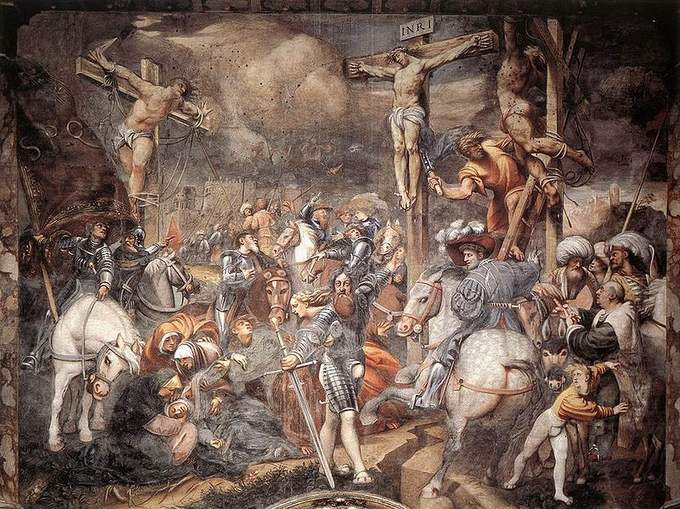| |||||
 |
Inside the Nave | ||||
| As the visitor enters the church he can admire the beautiful dimensions of the inside and notice the different heights between the nave and the presbytery area. | |||||
| Related images (1) |
|
Inside the Nave As the visitor enters the church through the two lateral entrances or through the monumental portal that is usually open only for solemn ceremonies, he can admire the beautiful dimensions of the inside (the nave is 28 m high and 68,5 m long, while together with the aisles it is 31,30 m wide) and notice the different heights between the nave and the presbytery area (the building of the so called "piazzetta senatoria", an area assigned to the nobility of the time, magistrates and vestrymen, was suggested by Carlo Borromeo during his pastoral visit in 1575). If we look at the elevation of the nave the element that surely catches the eye first, and that is a characteristic of this part of the church marked at the summit of each bay by the women gallery and the clerestory, is the complex fresco decoration above the arches, from the counter-facade to the apse and presbytery area. This cycle was carried out in two different periods, even if chronologically very near, and it masterly illustrates some of the main evolution steps of the passage from first to second Renaissance typical of the Cremonese painting and of the Po Valley in general.
The entire cycle of frescoes goes from 1505, with the Redeemer and Saints of the apse's bowl-shaped vault by B. Boccaccino, to 1521, with the magnificent Crucifixion of the counter-facade made by "il Pordenone" (see pic), and for its complexity this intervention called for a considerable expenditure sustained mostly by the Board of Trustees, the lay government board of the Cathedral, showing a noteworthy cultural updating in the choice of painters. At this point the work started and for the apse decoration a painter with a good experience the likes of Boccaccio Boccaccino was chosen and in 1507 he made, in the triangle above the arch of the presbytery, the beautiful scene of the Annunciation that moreover testifies how in that period the realization of the cycle with stories of the Virgin and Jesus, where this scene will be repeated again, had not been prepared yet. More or less in the same period an interesting votive fresco of 1370, located at the left of the apse cap and representing Madonna with a devotee (the Canon Benedetto Fodri) was heavily revised, the same fresco that the restoration works of 1997 have recovered highlighting in the double picture of the devotee these two phases. Coming back to the presbytery we may observe the two pulpits realized between 1814 and 1817 by Luigi Voghera, who re-employed here four precious relief panels made by GiovanAntonio Amadeo in 1483 and belonging to the Area Meli of the homonymous Chapel in the Church of S. Lorenzo, a precious purchase of the Board of the Trustees in the 19th century. | |
 |
Search other Guides |
Related arguments
| The Chapel of the Holy Sacrament and the Crypt |
| The Chapel of Madonna del Popolo and the altars. |
| Inside the Nave |
| The Right Aisle and the South Transept |
| The Presbytery Area |
| The outside aspect |

 Munch: The Scream Within
Munch: The Scream WithinOne of the year’s most eagerly awaited exhibitions to open its doors on 14 September 2024: Edvard Munch is back in Milan with a major retrospective after a 40-year absence.
 In the garden
In the gardenThe initiative, which is scheduled to run from June 26th to September 13th, 2020, is inaugurating a temporary space for art in Corso Matteotti 5, in Milan, in the very heart of the city.
 Perugia Travel Guide
Perugia Travel GuidePerugia is the chief town of Umbria. This beautiful town is sited on a hill in the middle of a verdant country. His central square is considered one of the most beautiful squares of Italy and history, traditions, art and nature make a unique ensemble in this town as in the whole




